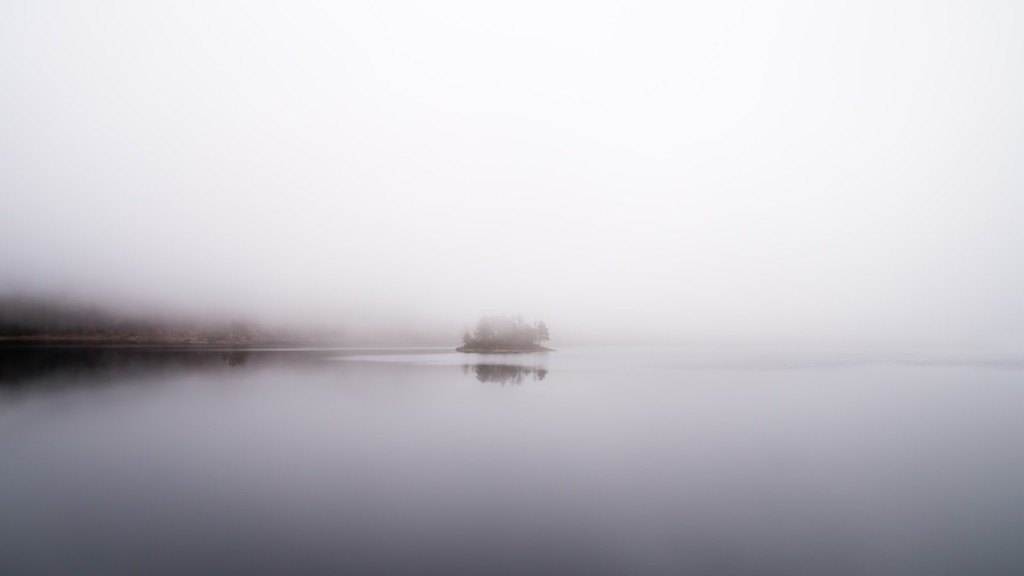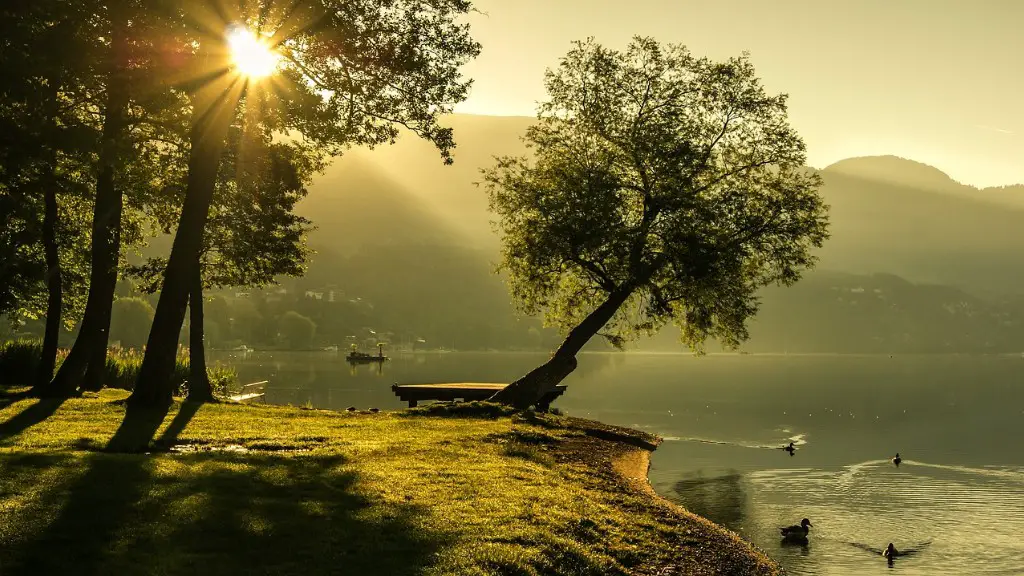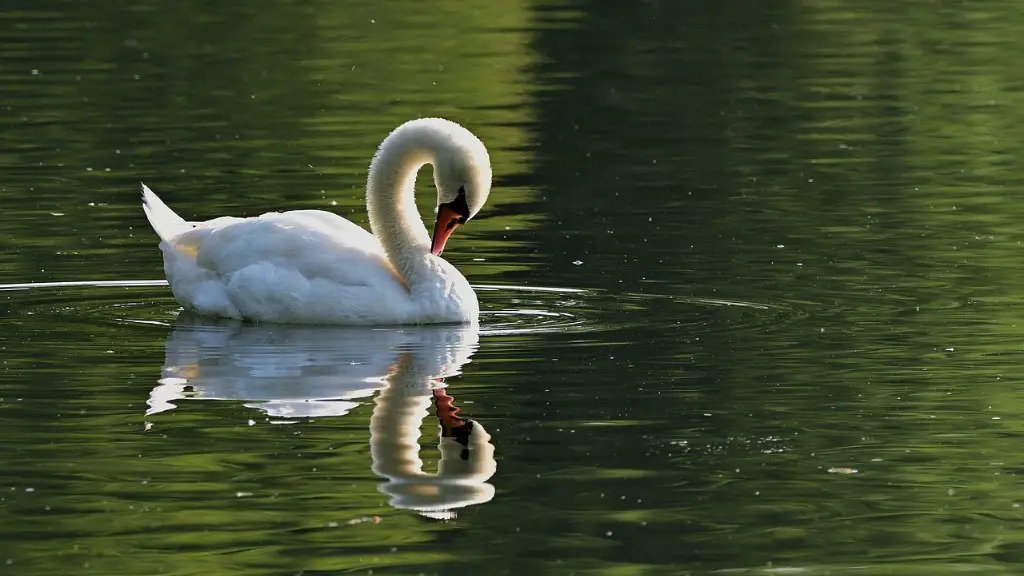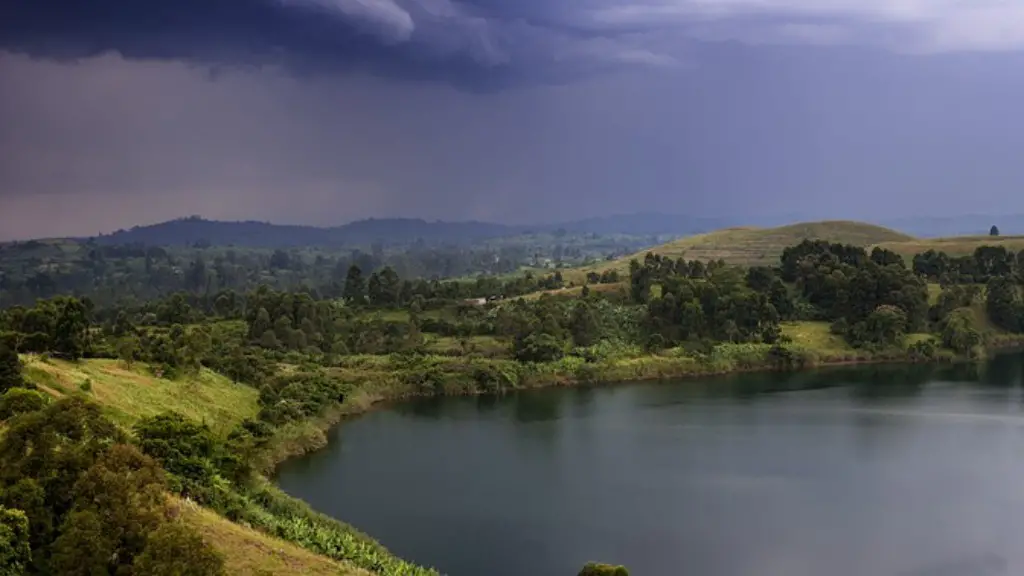Lake Superior is the world’s largest freshwater lake, and is located between Ontario, Canada, and Michigan, Minnesota, and Wisconsin in the United States. It is the northeasternmost of the Great Lakes and is the coldest and deepest of all five Great Lakes. Its surface water temperature can vary significantly from season to season.
In the spring, Lake Superior has a surface temperature of about 39°F (4°C). This temperature can remain roughly constant for several weeks in the spring, before slowly warming up as the summer progresses m. By late June, the average water temperature can be between 51 and 54°F (11 to 12°C). During July and August, the temperature of the lake can reach 62°F (17°C) at its warmest with some of the deepest portions remaining at 47-51°F (8 to 11°C) all summer long. In the fall, the water temperature can drop as low as 43-46°F (6 to 8°C), then continue to drop as colder temperatures move in.
The reason for the lake’s temperature variations can be attributed to its large size and depth, which cause the lake to take longer to cool in the summertime and longer to warm up in the winter. Depending on the region of the lake, the water temperature can vary from 1-2°F (0.6 to 1.2°C) per day in the summertime. This can cause significant differences in water temperature between the shallow and deep parts of the lake.
In addition to its size and depth, other factors affect the temperature of Lake Superior. These include air temperature, wind speed and direction, incoming water from rivers and streams, and other environmental factors. These all have an impact on the temperature of Lake Superior and its surrounding areas.
Experts have found that these temperature shifts have been increasing in frequency over the past few decades. This has been particularly apparent in the northern part of Lake Superior. Over the years, the lake has warmed faster than it has cooled, resulting in higher average temperatures. In fact, the average temperature of Lake Superior has increased by 2.6°F (1.5°C) since 1980, while the global average air temperature has risen by only 1.8-2.5°F (1-1.4°C).
The impact of Lake Superior’s temperature increase has been far-reaching. Warmer temperatures can lead to increased evaporation, which in turn causes water levels to drop. This can have a major impact on the surrounding environment, such as decreasing water availability for plants and animals and increasing the risks of drought. Warmer waters also mean more algae growth, which can have a negative effect on the lake’s ecosystem.
Numerous initiatives have been launched in recent years to address the rising water temperatures of Lake Superior. For example, measures have been taken to reduce water pollution and reduce land development near the lake, which can both lead to increased water temperature. Additionally, various organizations have worked to promote public awareness of the issue, educate the public on conservation measures, and advocate for more sustainable practices that will help protect the lake’s environment.
Lake Superior Water Currents
When understanding water temperature, it is important to also consider the effect of water currents in Lake Superior. Specifically, the surface water temperature of the lake is largely impacted by two primary currents – the Canadian Current and the North American Current. The Canadian Current is a colder, slower current that generally travels from east to west along the northern part of Lake Superior. The North American Current, on the other hand, is a warmer, faster current that generally travels from west to east along the southern part of the lake.
The interaction between these two currents helps to create a unique water temperature pattern throughout Lake Superior. In the eastern basin of the lake, the Canadian Current dominates, whereas in the central and western basins, the North American Current dominates. This creates warmer temperatures in the western parts of the lake, with colder temperatures in the east. The surface temperature of the lake also tends to be warmer in summer than it is in winter due to the different effects of the two currents.
Understanding how the surface water temperature of Lake Superior is affected by each current can help create a more accurate picture of its temperature variations throughout the year and allow for more effective management of the lake.
The Role of Climate Change
Climate change is the most important factor when it comes to understanding Lake Superior’s temperature patterns. As atmospheric temperatures continue to rise due to climate change, the surface temperature of Lake Superior is expected to do the same. Furthermore, due to the composition of the lake (large, deep, and slow to cool), it can be expected that the temperature changes will occur more slowly and eventually have more widespread impacts.
Climate change is also expected to have an impact on the Canadian and North American Currents in Lake Superior. As the temperature of the atmosphere rises, the temperature of the Canadian Current is expected to increase, while the temperature of the North American Current is expected to remain the same or even decrease. This is due to the differences in how the two currents interact with other bodies of water, with the North American Current being more closely connected to the Atlantic Ocean than the Canadian Current is.
As the temperature of the Canadian Current increases, it is expected to eventually overtake the North American Current, leading to higher average water temperatures throughout the lake. This could lead to further negative impacts on the lake’s ecosystem, including the potential for more frequent and intense algae blooms.
Mitigating Lake Superior Wealth Temperature Changes
Given the potential impacts of climate change on Lake Superior, it is critical to take action to mitigate its effects on the lake’s water temperature. This includes reducing air and water pollution, conserving energy, and using more sustainable practices. These measures can help reduce the rate of temperature increase, as well as lessen the overall impact on the lake’s environment.
In addition, it is important to raise public awareness of the issue and educate the public on conservation measures. Education initiatives and public outreach can help to promote responsible water use and encourage more sustainable practices. This can help reduce the negative impacts of climate change on Lake Superior.
Finally, local and regional governments need to work together to implement effective policies that can help protect Lake Superior from the effects of a warming climate. This includes developing protected areas, reducing pollution and runoff, and promoting sustainable land use. By taking these steps, we can ensure that Lake Superior remains healthy for generations to come.
In conclusion
Lake Superior is the world’s largest freshwater lake and is home to a variety of wildlife and plant species. The temperature of its waters can vary from season to season, as well as from region to region, due to its size and depth, air temperature, and other environmental factors. In recent years, the overall temperature of Lake Superior has been increasing due to climate change, leading to potential negative impacts on the lake’s ecosystem.
To mitigate the effects of climate change on Lake Superior, it is important to take action. This includes reducing air and water pollution, conservation measures, and increasing public awareness and education. Additionally, local and regional governments need to collaborate to develop effective policies that can help protect the lake. By taking these measures, we can ensure that Lake Superior remains a healthy and vibrant part of our world for years to come.




